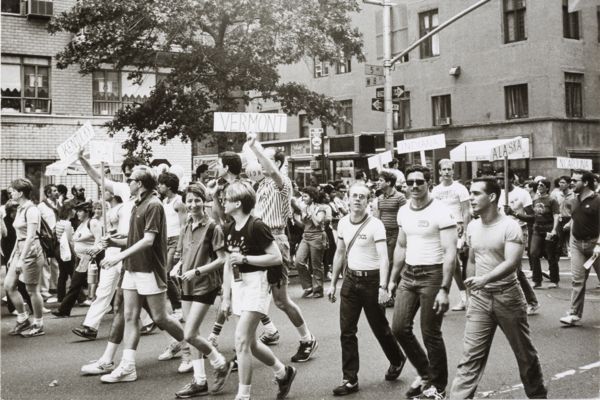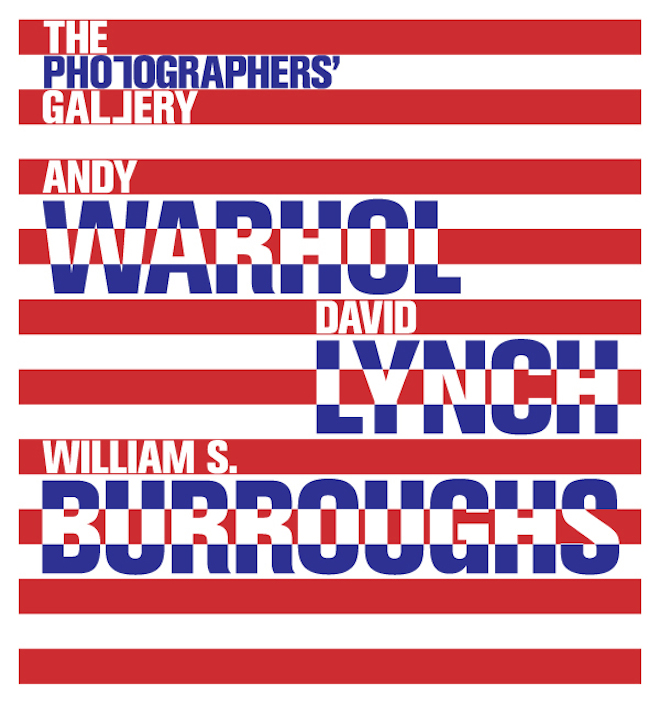LONDRA. Fino al 30 marzo The Photographers’ Gallery presenta nel Regno Unito la prima grande indagine fotografica di Andy Warhol (1928-1987). Un lavoro molto ampio e allo stesso tempo poco conosciuto che presenta una cinquantina di stampe in bianco e nero, di misura 8×10″, che si concentra sul lavoro dell’ultimo decennio di vita del pioniere della Pop Art.
Warhol è ben noto per l’utilizzo di processi fotografici come materiale di base al servizio delle sue tele, le più famose sono le sue polaroid. Ma non fino al 1976, quando accantonò ufficialmente il suo registratore a favore della 35 mm. Le fotografie di questa mostra offrono uno spaccato della vita quotidiana di Warhol: la gente per le strade, le feste, gli interni disabitati, i paesaggi urbani, la segnaletica e still life, i prodotti di consumo e oggetti vari. Il fascino di Andy Warhol con la fotografia è iniziata dall’infanzia, quando ha ricevuto la sua prima macchina fotografica all’età di nove anni e ha iniziato a sviluppare le sue immagini nel suo seminterrato. Nel 1950, lavora come grafico pubblicitario a New York e ha vissuto la popolarità della fotografia nella stampa. Nei suoi diari ha scritto: “Ho detto loro che non credevo nell’arte, ma credevo nella fotografia”.

Gay Pride, 1976-1987
Silver gelatin print, 8 x 10”
© 2014 The Andy Warhol Foundation for the Visual Arts, Inc. / Artists Rights Society (ARS), New York and DACS, London Courtesy FAIF Collection/Gallery focus21, Switzerland
Nel 1976, al culmine della sua fama artistica, Warhol ha acquistato fotocamera Minox. E ‘stato estremamente colpito della facilità e della libertà che gli offriva questa camera. Da allora Warhol ha vissuto raramente senza una macchina fotografica compatta, producendo anche più di trentasei fotogrammi al giorno. Già osservatore appassionato, Warhol cominciò a scattare la realtà che lo circondava in modo compulsivo, adottando la tecnica dello “scatta adesso, guardi poi dopo”, e ha scelto all’incirca 5 immagini da ogni rullino da stampare a “The Factory” di Christopher Makos e, più in là col tempi, di Terry Miriello.
Per dimostrare uno dei modi con cui Warhol lavorò a questa enorme quantità di immagini, la mostra include una serie di “Stitched Works”, ovvero fotografie seriali in cui più copie di immagini identiche sono state unite in una composizione unica creando oltre 500 opere tra il 1982 e il 1987.

English version. The Photographers’ Gallery presents the first major UK survey of Andy Warhol’s (1928 – 1987) extensive but little known 8 x 10” photographs. Focusing on the last decade of the Pop Art pioneer’s life, Photographs 1976 – 1987 feature over fifty vintage black and white prints alongside a small number of Warhol’s Stitched Works. Warhol is well known for using photographic processes as source material in the service of his canvases, most famously his polaroids. It wasn’t until 1976, when he officially ‘divorced’ his tape recorder in favour of his 35mm camera, that Warhol began taking photographs intensively for their own sake. The photographs in this exhibition provide an insight into Warhol’s daily life depicting: people in the streets, parties, uninhabited interiors, cityscapes, signage, still life, consumer products and miscellaneous objects. As in his artworks, formal aspects and patterns in subject matter emerge, showing photography to be at the centre of Warhol’s thinking, looking and making.
Andy Warhol’s fascination with photography began at childhood when he received his first camera at the age of nine and started developing his pictures in his basement. In the 1950s, working as a commercial artist in New York, Warhol witnessed first-hand photography’s increasing popularity in print media. In his diaries he went so far as stating: I told them I didn‘t believe in art, that I believed in photography. In 1976, at the height of his fame as an artist, Warhol purchased a small point and shoot Minox camera. He was extremely excited by the shrinking camera technology and the freedom it afforded him. From then on Warhol was rarely without a compact camera on his person, often taking more than thirty-six frames a day. Already an avid observer and recorder, Warhol began compulsively shooting his immediate surroundings. He embraced the ‘shoot now, see later’ nature of 35mm, and chose an average of five images from each film roll to have printed at The Factory, by Christopher Makos and later by Terry Miriello.
To demonstrate one of the ways Warhol dealt with this enormous body of images the exhibition includes a selection of Stitched Works, where multiple copies of identical images were sewn together and transformed into formal, structural compositions. Creating over 500 of these works between 1982 and 1987, the ‘stitched’ photographs highlight Warhol’s interest in serial and repeated imagery. Warhol’s radical use of the image helped pave the way for photography as a form of fine art. Photographs 1976 – 1987 marks Warhol’s adoption of the compact camera, an important development in his career-long endeavour to turn image making into a production line.
This exhibition was made possible thanks to the generous co-operation of PMG Fonds Management AG, Bruno Bischofberger Gallery and Timothy Taylor Gallery.

